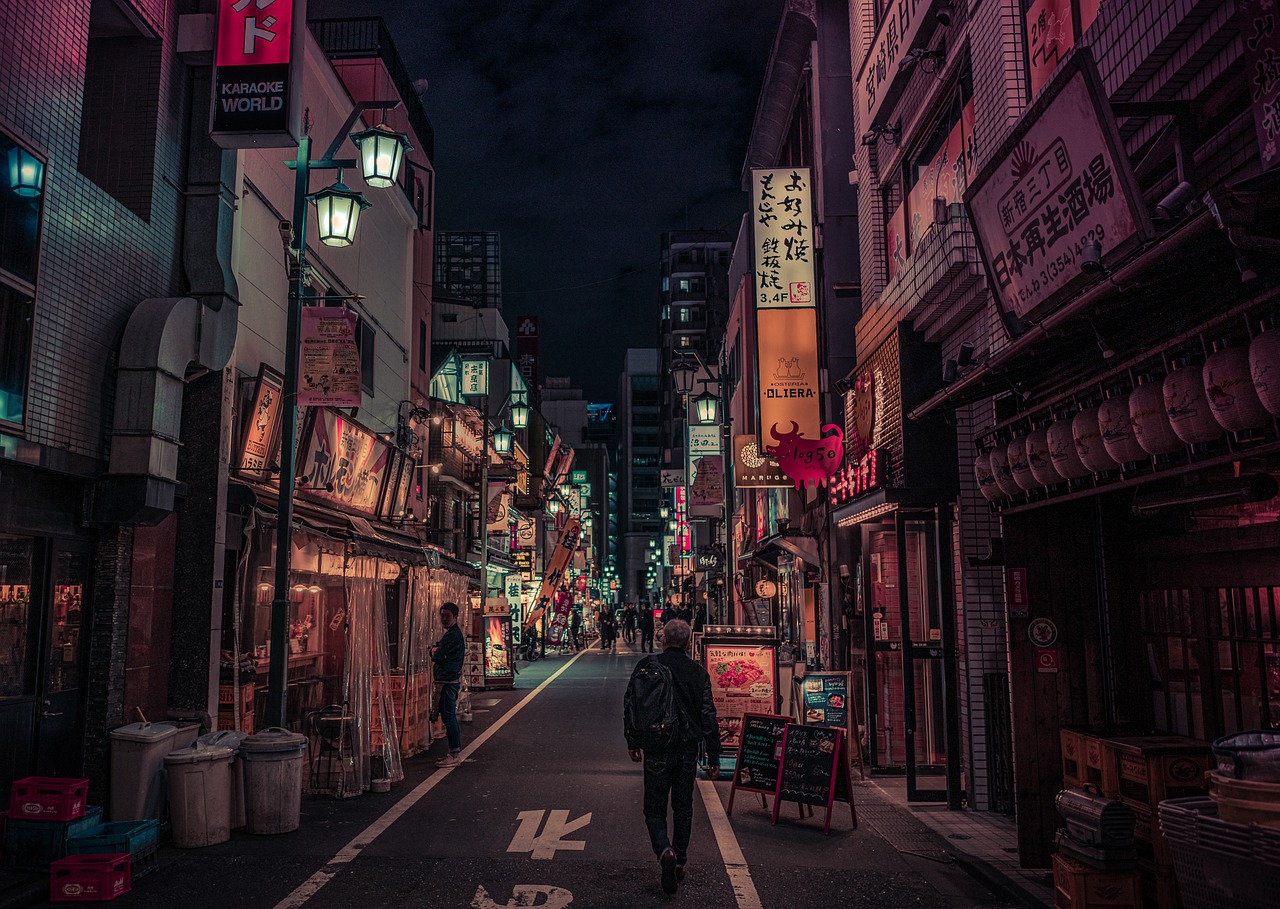1.Fly in to Haneda Airport
Tokyo has two airports, Narita International Airport and Haneda International Airport.
If it’s possible we’d strongly recommend arriving and departing Tokyo from Haneda Airport rather than Narita.
Haneda International Airport is located in Tokyo, on the southern tip of the city near Tokyo Bay. From Haneda Airport it’s an easy 30 minute train or monorail ride into central Tokyo. Arriving at Haneda will allow you to spend more of your first time in Tokyo seeing the sights.
Narita Airport is not located in Tokyo but in the neighbouring prefecture of Chiba. From Narita it’s a 40-80 minute train ride (depending on the train) or a two hour coach ride to the centre of Tokyo.
Unfortunately flights in and out of Haneda Airport are often more expensive than flights to and from Narita because it is in a much more convenient location.
2. Spend At Least 5 Days in Tokyo
We’d recommend spending at least four or five days in Tokyo.
How long you choose to spend in Tokyo will obviously depend on your budget and if you plan to visit other parts of Japan during your stay.
Yet if this is your first time in Tokyo you’ll want as many days as possible to see as much as you can – there is enough to see and do in Tokyo to last a lifetime and beyond.
With at least five days you’ll get to see a good range of Tokyo’s main sights, from famous landmarks and neighbourhoods as well as some of the city’s off the beaten track spots. You could also fit in a day trip to one of the many beautiful spots that are an easy train ride from Tokyo too.
However, even if you have less time to spend in Tokyo you’ll still be able to see a good selection of the city’s main highlights, as you can see from our two day Tokyo itinerary.
3. Spring or Autumn are the Best Time to Visit Tokyo
Spring and autumn are easily the best times to visit Tokyo.
This is due to the good weather and the beautiful nature that blooms throughout the city in both seasons. If this is your first time in Tokyo then spring or autumn is definitely when the city is at its best.
In spring daily temperatures range from highs of around 13°C (55 °F) by early March to the low 20°Cs (around 71 °F) in May. Most days are typically sunny and dry.
In spring the city is filled with gorgeous shades of pink, white and red cherry and plum blossoms. A huge deal for locals and tourists alike, cherry blossom season is one of the best and busiest times to visit Tokyo.
Sakura season usually reaches Tokyo between the last week of March and early April, though the exact dates vary from year to year. If you miss sakura season you can still admire the azaleas and hydrangeas that fill Tokyo’s parks, gardens and temple grounds during the rest of spring.
4. Summer is the Worst Time to Visit Tokyo
Summer is easily the worst time to visit Tokyo. Early summer is Tokyo’s rainy season, and along with heavy rain the temperatures and the humidity begin to rise. Days are often overcast and cloudy until the end of July, with temperatures in the mid to high 20° Cs.
After July the summer in Tokyo is usually incredibly hot and humid, with temperatures regularly reaching 30 °C. At the height of summer the added humidity can make the temperature feel closer to 40 °C.
The humidity and temperatures do become slightly more bearable by early October as autumn approaches, but needless to say, trekking across Tokyo in the blazing sunshine and unforgiving heat and humidity is incredibly uncomfortable. If high temperatures and humidity are not your thing then consider visiting Tokyo at a different time of year.
5. Avoid Tokyo During Golden Week
Golden Week is a collection of consecutive public holidays at the end of April and beginning of May that usually coincide with at least one weekend, making this one of the busiest travel periods of the year in Japan.
The Golden Week holiday dates are April 29th, and May 3rd, 4th and 5th each year. A lot of people also use these extra holidays as a chance to travel out of (and then back into) Tokyo over the Golden Week vacation.
While larger business tend to stay open, many smaller cafes, restaurants and museums close down during Golden Week, as people travel across Japan to be with their families.
Flights, trains and hotels are often extremely busy during this period and are often fully booked way in advance. Tokyo’s main tourist attractions are also packed as people take advantage of the extended holiday.
10. Pick Up a Pasmo or Suica card (or Get Them on Your Phone)
Pasmo and Suica are contactless prepaid cards (known as IC cards) that allow you to tap in and out of all train and subway stations in Tokyo. They can also be used on most local buses too. Both Pasmo and Suica are essentially identical; Suica is operated by JR East while Pasmo is operated by Tokyo Metro, who operate most of the subway train lines in Tokyo.
The sale of Pasmo and Suica cards were suspended in 2023 due to the global shortage of semi-conductors that are needed to produce them. However there are still short term versions of both Pasmo and Suica cards available for visitors to Japan – these are the Pasmo Passport and the Welcome Suica.
11. Pick Up Pocket WiFi or an eSim
If it’s your first time in Tokyo then its guaranteed that you’ll be taking a shedload of photos that will need to be instantly Instagrammed. Plus you’ll also need to get online in order to navigate your way around the city.
In which case hiring a portable WiFi router or an eSIM mobile data plan is going to be essential to keep you connected.
Several devices can be connected to a portable WiFi router. If you’re travelling with a phone, a laptop and a tablet, this is by far the easiest and most convenient way to get online.
Also, multiple smartphones can connect to a single WiFi router, making it a great option if your travelling in a group.
If you just need data on your smartphone to browse the web and access essential apps when you’re out and about – and don’t want to carry around an extra device – then an eSIM mobile data plan is perfect.
Remember Not to Tip
Tipping is an alien concept in Japan – in fact it can sometimes be seen as something of an insult.
In Japan it is believed that people are paid fairly for the work they do and tipping might suggest that they are being underpaid.
In bars or cafes you may occasionally see a small tips jar by the till, and leaving a tip will be entirely at your discretion. Otherwise remember that tipping waiters, bar staff, taxi drivers or hotel porters is not necessary and may even cause offence.



